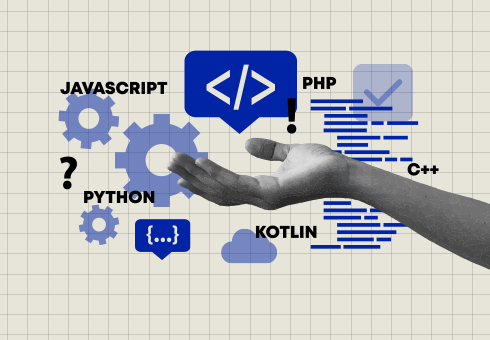
From Clunky to Clever: Why Developers Prefer Headless CMS
Table of Contents
There was once a time when developers didn’t have anything to do with the marketers. But today the story is different. With everything online, your marketing and development need to go hand in hand, and that is where headless CMS comes into the picture.
Developers love it because it separates the “what” (content) from the “how” (presentation), giving them freedom to build front ends without being chained to back-end templates. Marketers love it because it gives them the ease of managing content. Businesses love it because it scales without breaking a sweat.
In this blog, we will break down why developers, in particular, are smitten with headless CMS and why it is the future of digital content.
“Don’t Box Me In” - The Freedom Fetish
Developers hate sticking to the front-end restrictions. Traditional CMS systems like WordPress or Drupal usually come with a lot of restrictions.
A headless CMS comes with a lot of benefits:
Write once, deliver everywhere: Content is stored in a central hub, and it can be sent to websites, mobile apps, smartwatches, and so on from there. Meaning? The developers do not have to upload anything separately.
Freedom to choose your weapons: A headless CMS gives developers the freedom to choose their favourite framework - React, Vue, Next.js, Svelte, and so on.
No design handcuffs: UI is completely decoupled from content, giving developers a dream-come-true chance to bring their wildest designs to life without any unwanted restrictions.
Speed Thrills, Monoliths Kill
Speed and performance are two of the major offerings of a headless CMS. It simply gives you an API and allows you to go wild from there.
Faster Loading Times - Headless CMS provides APIs that deliver only the content with no extra baggage.
Scalability - In the crazy viral online world, scalability can come unannounced at any time, and a headless CMS can make sure that your website is prepared for the D-moment at any moment.
Fewer Dependencies - With a headless CMS, fewer plugins can break your website without any notice.
A fast website is not only users' favourite but is also favoured by the Google algorithm, making it a win-win for marketers and developers.
The Designer-Developer Peace Treaty
Let’s address the elephant in the room!
Developers and designers want different things from the website. Designers want infinite scroll parallax rainbows, whereas developers want something that compiles in less than a decade.
Enter a headless CMS that acts as a bridge between the two by:
- Helping designers build bold, beautiful fonts without developers having to wrestle with clunky CMS templates.
- Allowing marketers to update the text and images without developers having to intervene every time.
Result - Everybody wins.
Security: No Head = No Hacker Drama
Security is the ultimate love language of the developers. Traditional CMS has always been hackers’ favourites because the front and back end are glued together. One crack, and poof—your site’s on a dark-web showcase.
With headless CMS:
Front-end and back-end get separated from each other. This protects one in case the other gets compromised.
API-first infrastructure reduces the attack surface, thereby protecting your website.
Fewer or no plugin requirements ensure fewer third-party vulnerabilities.
The Multichannel Megaphone
Your business is no longer on your website. It is scattered on multiple channels with your audience hanging out on Instagram, TikTok, mobile apps, OTT platforms, IoT gadgets, and who knows what else.
A headless CMS helps marketers deliver consistent, on-brand content across all these touchpoints without messing up the tone. It also makes developers’ lives easy by helping them store everything centrally and distribute it via APIs.
why developers prefer headless CMS:
No more copy-paste chaos. The same content is used to power your website, app, and social channels.
Your content is coming from a single source and therefore, your brand voice stays aligned no matter where your potential customer is.
With new social media channels popping up every now and then, a headless CMS gives developers peace of mind that they don’t have to rebuild. They can simply plug it into the existing content pipeline. This means less maintenance for developers and speedy adjustment for the marketers.
The Toolbox That Never Judges
A headless CMS is a cool toolbox that doesn’t care whether you want to build with React, Angular, Vue, Svelte, or whatever tomorrow’s hot framework is. It simply serves content neatly through APIs and lets developers think about presentation.
This gives developers:
Framework freedom: Developers have the wiggle room to decide the tech stack that works best for the requirements of the business.
Easy Integrations: Gone are the days when integrations used to give developers sleepless nights. With a headless CMS, integrations become smooth and quick, allowing businesses to stay ahead in the game without having to worry about breaking the system.
Scalability with ease: Our brand is going to be bigger and better, and your developers can easily add new services—like personalization engines, chatbots, or translation APIs—without overhauling the CMS itself.
So, why do developers love headless CMS?
The one-line answer has to be - “Because headless CMS fixes pain points that have haunted developers for years.”
A headless CMS allows developers to build a great system with minimal friction, and businesses to have smoother digital transformations and consistent customer experiences. For marketers, it’s the relief of being able to update content without breaking the site.
Still confused, here are the questions we are asked frequently at Doors Studio:
Q1: Is a headless CMS only for big enterprises?
Not at all! Small businesses and startups can benefit in terms of flexibility, future-proofing, and security, no matter the size.
Q2: Does using a headless CMS mean marketers will always need developers?
Not necessarily. Most headless CMS platforms come with user-friendly interfaces so marketers can update content without touching code.
Q3: What’s the biggest downside of going headless?
The initial setup can feel overwhelming compared to the ease with which traditional CMS provides. But once you’re up and running, the overall functioning becomes much smoother.


